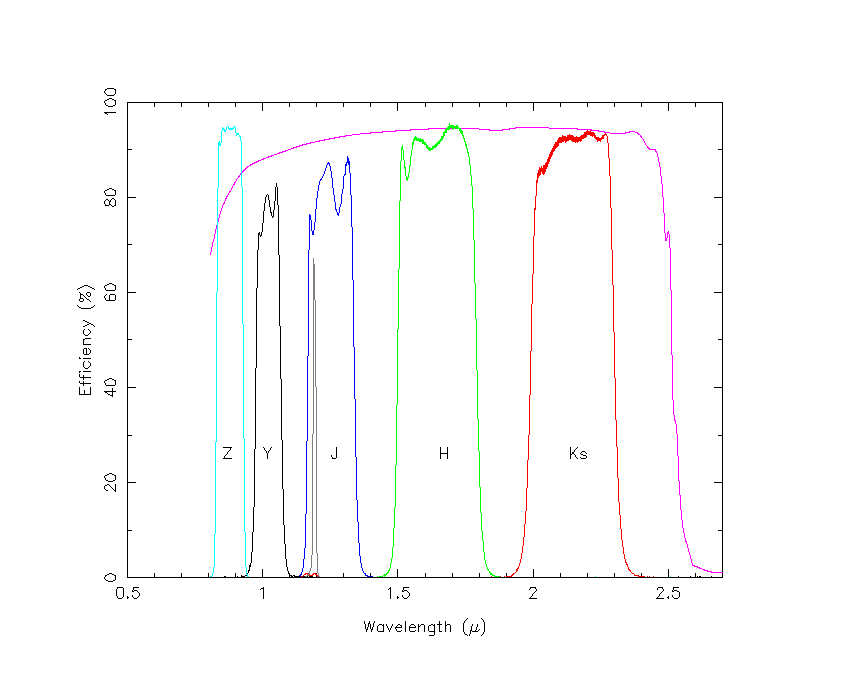VISTA Filter Set

| Z | Y | J | H | Ks | 1.18μm | |
|---|---|---|---|---|---|---|
| Central Wavelength (μm) | 0.877 |
1.020 |
1.252 |
1.645 |
2.147 |
1.191 |
| Width (μm) | 0.097 | 0.093 | 0.172 |
0.291 |
0.309 |
0.011 |
| Effective Wavelegth (μm) | 0.878 |
1.021 |
1.254 |
1.646 |
2.149 |
1.191 |
| Vega to AB | 0.502 | 0.600 | 0.916 | 1.366 | 1.827 | 0.853 |
NB. the previous Vega to AB conversions (v1.3) for Z,Y,J,H,Ks were: 0.524, 0.618, 0.937, 1.384, 1.839
A sample detector QE curve is shown superposed in purple. The narrow grey curve in the J-band is the NB118 filter. Filter transmission tables and the QE curve are available in the ESO VISTA instrument pages.
Central wavelengths and widths defined using the half-max transmission points. Note that the central wavelength defined this way agrees with the weighted centre-of-gravity to within +/- 0.001. Effects of the detector QE curve were not included in these estimates.
The formula for Effective Wavelength is taken from equation 3 in Fukugita et al. (1996) and does incorporate the QE curve.
For the calculation of AB magnitude we follow Hewett et al. 2006, using the Bohlin & Gilliand 2004 spectrum of Vega (and assuming it is zero magnitude in all filters). For each filter we find the constant flux value (fnu) which gives the same integrated flux in the filter bandpass as Vega (filter transmission*QE). The definition of the AB magnitude system then follows from ABnu=-2.5 log fnu - 48.60 (where fnu is in units of ergs/s/cm2/Hz).
Note that VISTA uses a Ks passband similar to 2MASS, unlike WFCAM which uses K. For comparison (and using the same code) the WFCAM values for ZYJHK are : 0.529, 0.633, 0.937, 1.376, 1.897 : all within a few % of the VISTA corrections except for K (as expected given the differences with Ks). These values are within a few parts per thousand of the independently computed values in Hewett et al. (2006).

